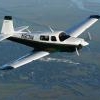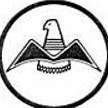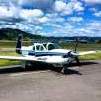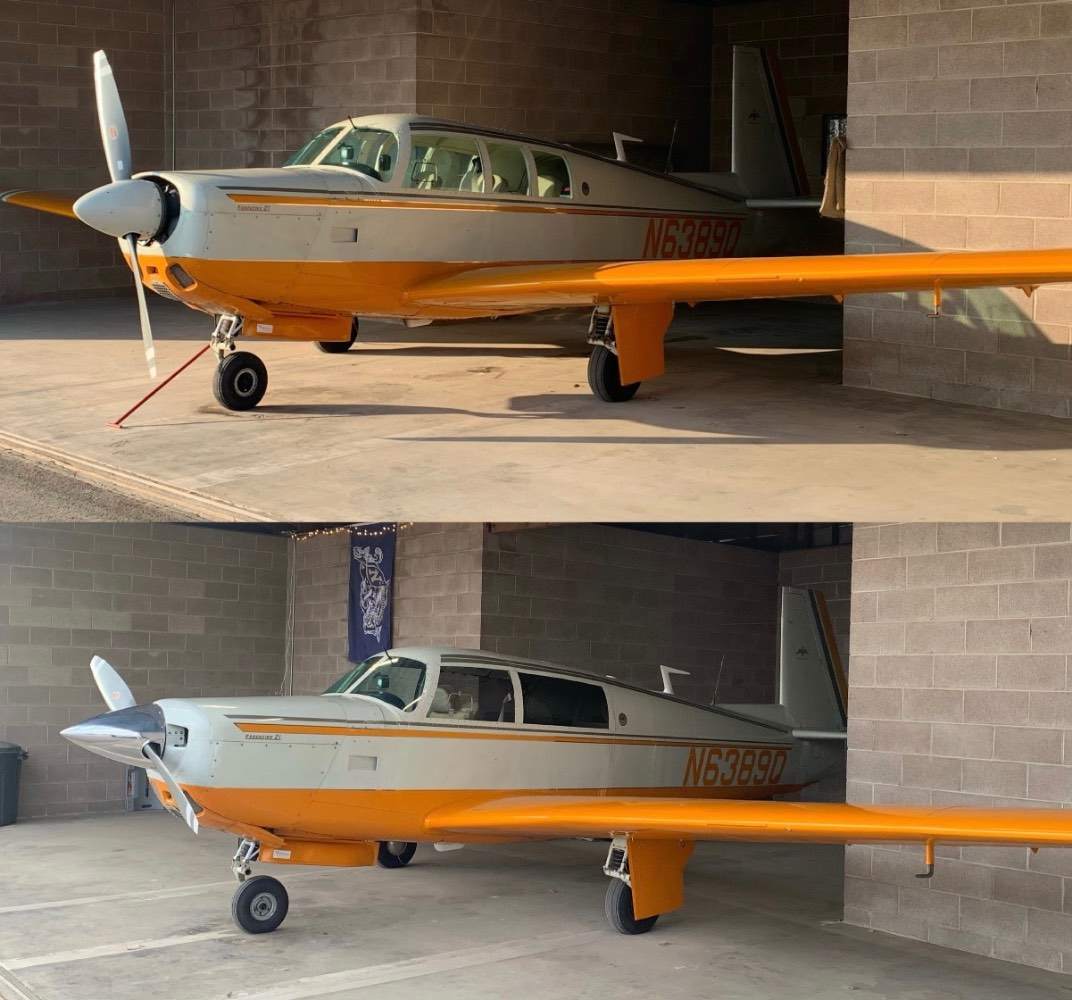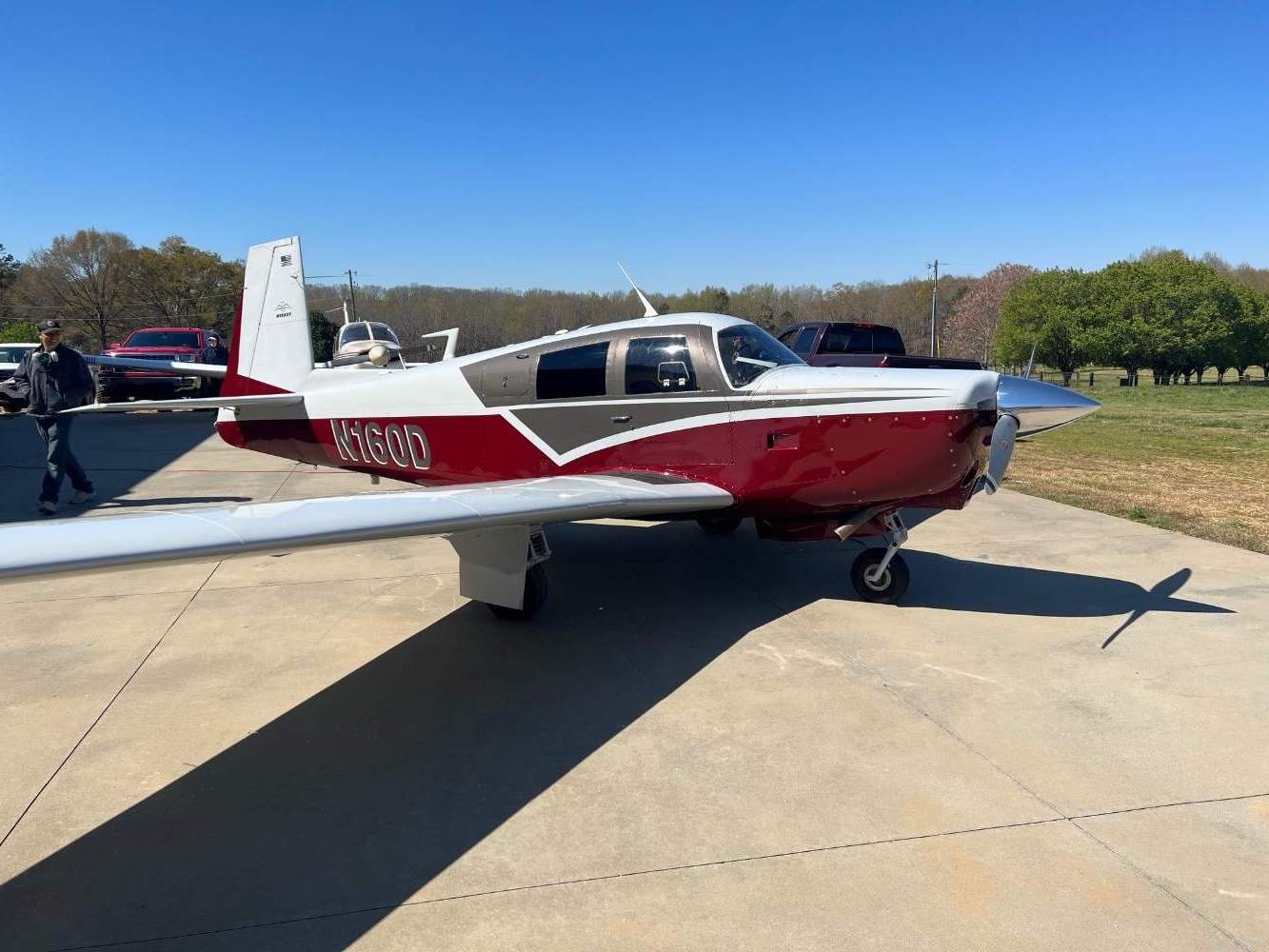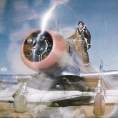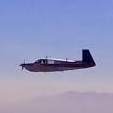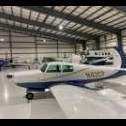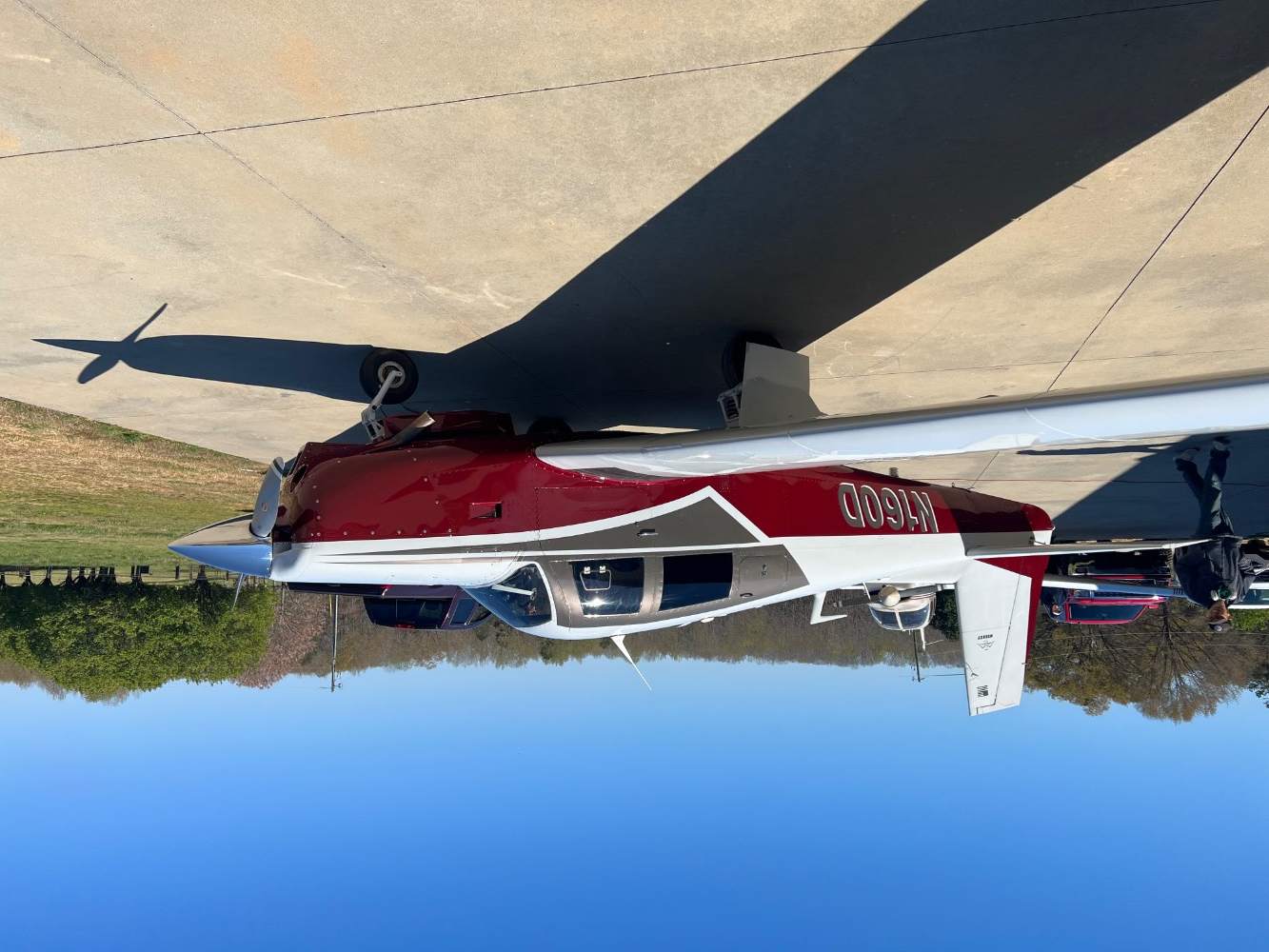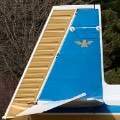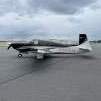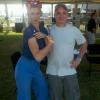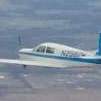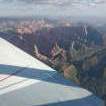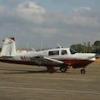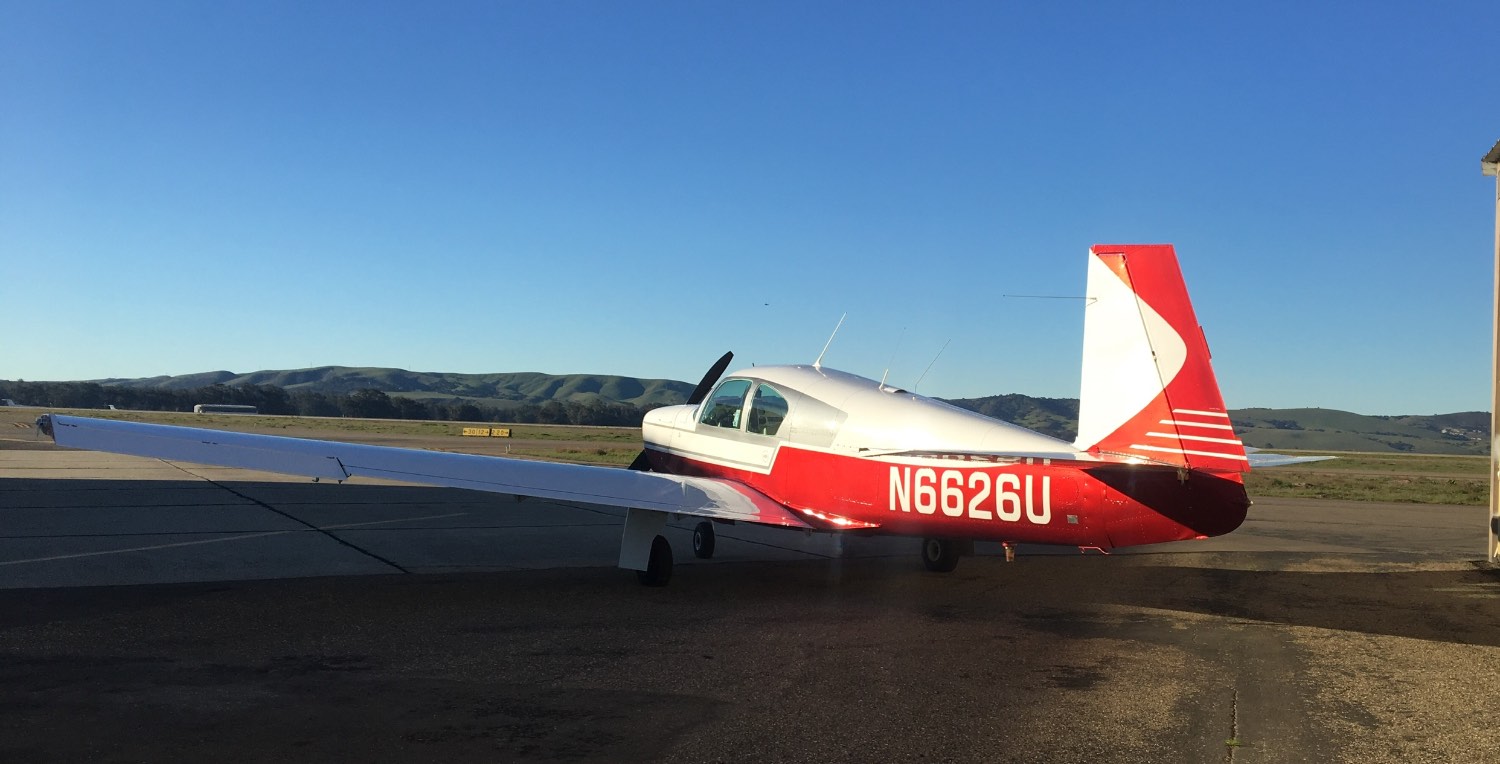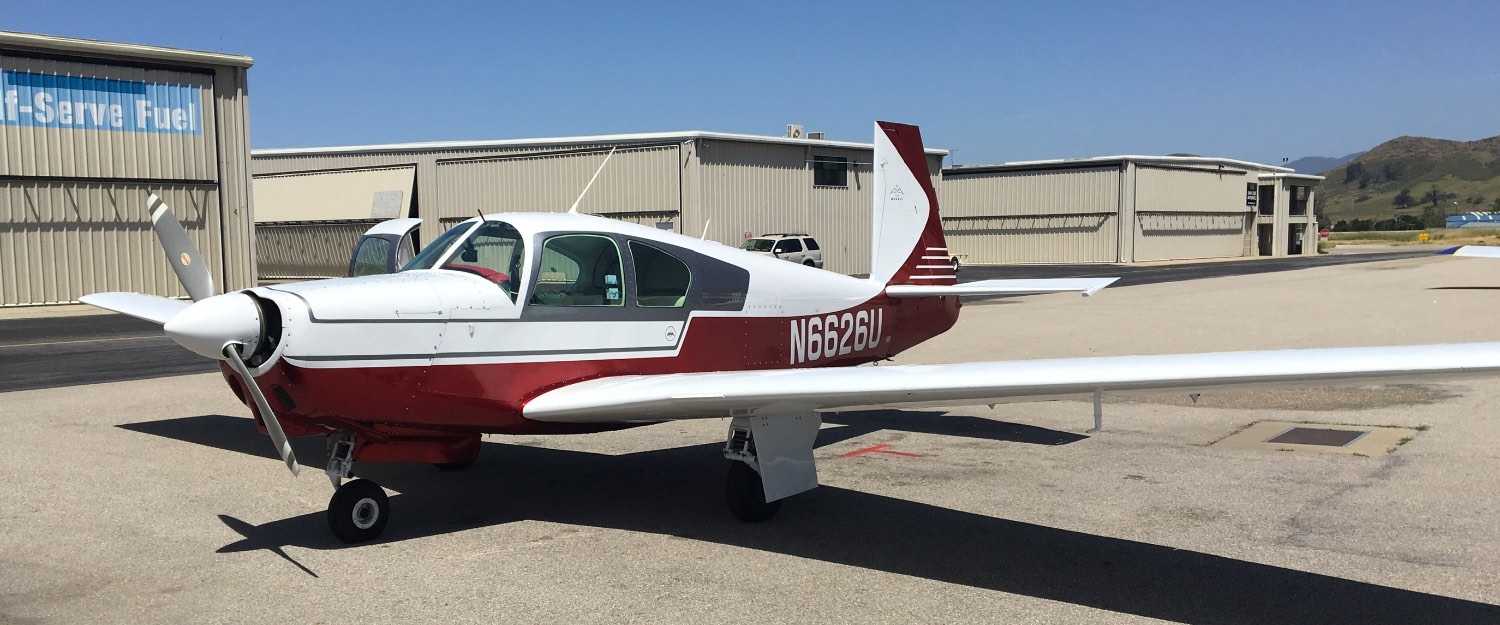Leaderboard
Popular Content
Showing content with the highest reputation on 03/28/2023 in all areas
-
The short version of my story is that I wanted to purchase two new main gear shock links. I have in prior years bought parts from the factory by calling them directly. The current policy is to order through a MSC only. My service guys had in the past just called Lasar for price and delivery of factory parts. This time the phone went directly to an answering machine when they called. The same happened when I called. The message said to email parts requests. I did this but was a bit unsatisfied with this method given my plane was sitting on jacks in the hanger at the time. While awaiting a reply I discovered Dugosh had one of these new old stock on eBay. I called to ask if they happened to have a second one. They answered the phone on the first ring and told me they had only one. They checked factory stock for me while I was on the phone and gave me a quote. Further they offered to walk across the ramp to the factory to pick it up for me and ship it in the same box with the one they had available. You can't ask for more than that, I thought. The new one cost $1485 plus a bit of freight which is a lot. Lasar sent me an answer four days after my inquiry. They offered to sell me exactly the same part (as in the same exact physical one sitting on the factory shelf) for over $1800! So my experience was this: Lasar took four days to answer and marked up the factory price more than 20%. Dugosh answered instantly, shipped the part at once, and charged me a bit over the factory list price. They even apologized for not being able to box it up in time for UPS pickup the same day. Given the above it will be an easy choice who to call first when I need factory parts next. To be fair, I did not call every MSC for a quote and I would hope there are others who answer the phone. Don Maxwell was nice enough to tell me that both that the part was heat treated and not repairable and that he did not have any in stock. I only called Dugosh because they had one advertised. It does seem to me that they have a huge advantage over other MSC given they can see the factory from their hanger. Your experience may be different but I would suggest you consider Dugosh if you need factory parts.8 points
-
It is my honor to announce that Dan Bass and Alex Gertsen have stepped up to make the Mooney Summit IX a reality once again in 2023. Initial target dates is last part of September. Look for some more info soon as they put the moving pieces together and really present a great program! Thanks Guys!5 points
-
I will be a voice of descent here. We for the most part only know asking prices so it's hard to say what value the market places on mods. I would expect to pay a significant premium for a well well finished 201 clone over a standard F. Having flown both Fs and Js, the delta in block speed for average versions of each model amounts to little more than bragging rights. There are well rigged and tweaked outliers that do much better (and dogs that do much worse). Byron and Becca’s 201 @jetdriven comes to mind but he has spent a lot of time tweaking both his airframe and power settings for maximum speed, low altitude amateur air racing. I am biased towards the manual systems and the lighter weight of the vintage birds. The airframe build quality of the 1960's birds is about as good as any the factory ever put out. The same cannot be said for interior refinement/fit and finish but that is correctable. If there were a situation where I was seeking a replacement Mooney, I would be looking for another F model with an eye towards birds that are well modified. There are several folks with experience that extol the virtues of the vintage birds: @M20F-1968 and @FloridaMan both fly well modded vintage Fs and certainly could have acquired 201s instead. The former did a wings off "restomod" of an F that has resulted in TN'd 201 clone that is one of the most desirable mid-bodied Mooneys in existence. At the end of the day, I think you should look for the best value that meets your mission and desired equipment as the difference is performance between the two would be quantified as minimal anywhere other than an aviation forum.4 points
-
ARI cowl Mod gave my Mooney a modern look and about 5 MPH. Here’s the breakdown: Used (like new) Polished 201 spinner with 5 hrs on it from eBay, listed $2k. Got it for $1032 shipped Top Gun labor: 11.5 hours, 135/hr: $1587.72 Finishing and painting: 7.5 hours/$60 in materials: $1103 Total: $5035 I also went with the single tinted piece rear windows, all side windows were about $1500 plus another 12 hours install. No speed gain, but it looks very close to a J and the view is fantastic from the back seat. I wanted to do the single piece sloped windshield, but you’re looking at $10k between parts and labor.4 points
-
I can think of one scenario. If I lost the engine after crossing abeam the numbers (where I drop gear and 1st notch of flaps). In my case the top of the white arc and Vbg are about the same. I can say from doing many power off approaches from downwind that flaps detract from glide distance more than most would think.3 points
-
3 points
-
Keep in mind that there are other benefits to getting the actual J airframe, as compared to spending the same amount of money (or more) modding an F. I have an F with most of the speed mods (cowl+windshield included) and it definitely looks sleek and goes a few knots faster. But it's impossible that I'll ever have a gear speed greater than 104kts in this plane, as compared to 132kts on the 1978+ J models. Sure, I've learned to start pulling power early in order to be slow enough in the pattern to drop the gear, but it stings when controllers call out to following traffic that I'm going cessna speeds down the glideslope. Also, if you like the look of the shiny smooth wingtips of the J, make sure you avoid the 1967(ish) F model years because the blunt wingtips can't be modded into the nice curvy design. Just a few of the benefit of the actual J model over the fully-modded F that come to mind. If I were considering spending money to mod an F model to J standards, I'd just buy the J. Otherwise, find an F with the mods you already want before buying, as everyone else has said. The impact of pre-existing mods on pricing will be minimal. Our values are a little different, so I'm very happy with my F that has a nice IFR panel with passable (but not fancy) paint, interior, and many of the mods tossed in as a bonus; it was certainly cheaper than a J with a similar panel. But if you want speed mods aerodynamics/looks above all else, just get the J from the start.3 points
-
I did an interview video a couple years ago with the owner, I bought my 62 C project from him in 2019. It’s on my bucket list to cross the North Atlantic in the CAFE….2 points
-
I guess I am a mother. Looks cool to me!2 points
-
I notice it on final and during precision instrument approaches, but I also don’t worry about it because those segments of flight don’t seem continuous to me.2 points
-
It turns out that a lot of hangar fairies are good at rehabbing wet compasses, so that's reasonably well covered.2 points
-
2 points
-
Would you put your sleeping children in it, alone, for the self drive home?2 points
-
My son wanted to go to AI camp this summer so I sent him a scholarship application. He used ChatGPT to fill out the application then added a couple of lines at the end about how he’d used ChatGPT to fill out the application. He got the scholarship.2 points
-
On final, mp is pulled back enough that rpm is no longer controlled by the governor (at high rpm). Rpm becomes dependent on the mp like a fixed pitch prop. It just happens that some of the props also have a yellow range right where that mp for holding a good airspeed on final gives you that specific rpm. You probably don’t have this combination with your setup. You can either add mp and go faster or reduce it and go slower, but you can’t change rpm by itself because it’s on the stop. Edit- I guess you can still slow it down which probably works but would feel weird! edit: maybe i get what you meant… probably kind of tongue in cheek, but pull the prop back to slow it down and add in some mp?1 point
-
Great points throughout. A number of the speed mods we have were first proven on the CAFE. If it could be re-certified and daily driver capable... maybe 135k-165k? 50 hours on the engine, low airframe time having been a test platform all it's life but also means it has gremlins to work out. Otherwise it belongs in a Mooney museum or part of Don's collection along side the Predator.1 point
-
A bit of a loaded question... as-is, experimental market-research category it ain't worth much, unfortunately. (I'm assuming it hasn't been upgraded with the latest avionics and autopilot). It's just not practically usable like a standard Mooney for most owners. As-is, it might have value for someone wanting to pursue STC development for some or all of the mods as a test vehicle... and then it becomes a business case of how much additional it would cost to get approvals, and how many sales would be needed to return a profit. I'd speculate that business would never close in this modern era. It might have worked great in the 80s or 90s. The better question to ask, what is it worth if all of the mods were certified, and you could fly it normally! I'd say it would be easily worth $20-40k over any other E model, assuming comparable panel/engine times/cosmetics.1 point
-
Man, I always thought that plane looked so sleek! I actually like the front end. To get 189kts at 8000ft is almost as impressive as the 28mpg it gets at 160kts. If you had the 88gal Monroy tanks you could go 1500nm with IFR reserve at 189kts or go 2000nm @ 160kts.1 point
-
1 point
-
That is what I do and it makes me happy. One thing, I don't think there is actual sink when retracting the flaps, but a momentary reduction in the climb rate. Like the Vomit Comet mentioned, if you are going up at 700 FPM, and it drops to 650 FPM, you will feel a bit light in the seat1 point
-
Ain't they great? In my C, the caution zone is 2000-2250, and I sometimes come down the approach at 2300. I keep whatever my cruise RPM was, unless ATC levels me off for a while, then I reset MP & RPM to my Key Number and hold that RPM as long as possible. Because at some point, as you reduce MP and slow to Vf = 125 mph and Vg = 120 mph, then slow towards 90 knots = 104 mph, throttle gets low enough that the governor is on the stops and RPM decays.1 point
-
The early 201s had “blunt” wing tips as well. The only F models that cannot be modded with wingtips are the twist wing models, which ceased sometime in 68.1 point
-
Relax. No one is saying this will happen tomorrow. People are just fantasizing about how and when this will happen. And it will.1 point
-
That's because, on a 2-1/2 hour flight from WV to KY, the FAA gave me weather and NOTAMs for every airport from Wisconsin to Boston to Miami . . . . Who has time to sort through all that crap?1 point
-
Ah, I too run half flaps but usually just over 2350 rpm which gives me 100 mph (still A). Gee, I'll have to consider that slipping down the ILS idea <sarcasm>1 point
-
Yeah, that’s the issue on instrument approach. I like gear and half flaps which means ~2300 rpm to hold 90mph. I guess I could either go with gear up and no flaps with 2000rpm or gear, full flaps and slip down the ils with 2400rpm?1 point
-
1 point
-
I know of M20K's that have had the same problem, and have had the gear door stop kit installed to prevent the inner door going over centre. So I did this when I replaced the gear doors during my Encore upgrade (same gear and doors as later model Mooneys). I have a spare set of used links if anyone is stuck while waiting for parts. I would not fly with an inner door unrestrained, and would not install replacement links without going through the complete gear setup process. Aerodon SBM20-254: M20M -SIN 27-0107 THRU 27-0147 - (S/N's 27-0115, 27-0123, 27-0127, 27-0131, 27-0137, 27-0142, 27-0144, 27-0150 HAVE HAD INSTRUCTIONS OF SB ACCOMPLISHED).1 point
-
Really??? I've had my F for 5 years and have NEVER had need to operate below 2400 rpm, and other than the slight annoyance on downwind I described earlier this has been a complete non-issue for me.1 point
-
1 point
-
1 point
-
Note, nasa already has an AI pilotless plane. also believe nextgen fighters are pilot optional AI driven1 point
-
CFR 65.81 is in regards to a repair station where supervisors who don’t have an A&P are responsible for signing off work. The key word is “supervise”. This does not mean as an A&P that you must be supervised and signed off before you can do this work on your own. I had this discussion with the infamous Mike Busch and asked him to provide the document the FAA requires for me to keep with sign offs to prove I had previously done a task. I’m still waiting for his reply 10 years later. I also called my PMI and he confirmed this is geared towards repair stations with non certified mechanics in a supervisory role.1 point
-
My Tesla Model 3 Full Self Drive isn’t perfect. But it is better than me on the interstate at night.1 point
-
1 point
-
Aeroshell 100 Plus contains the Lycoming additive. Ok if you have a Lycoming engine but not good for Continetal starter adapters nor does it contain as strong anti-corrosion additive as Cam-Guard. You can note this by the Phosphrus and Calcium numbers in the oil analysis between the two.1 point
-
They will start to consider it after G100UL is widely available.1 point
-
Very true. Many more suicidal AIs than suicidal pilots. AI doesn’t have to be perfect, just better than humans. I think some of you are still failing to understand that.1 point
-
1 point
-
You need a TSO'd one and this one works for a lot less money. I have it on my Ovation with a Garmin 345 https://www.aircraftspruce.com/catalog/avpages/comant105.php1 point
-
I went the local community college route. I didn't start the program because I wanted to be an A&P though, I just enrolled in the "General" class, the first semester of the A&P program because I wanted to further my understanding of aircraft as a flight instructor; just on the principal the more you know the better you can handle the unexpected and know if it was an emergency or not. I did my engineering job by day, rushing from work at 4pm every day to start the evening classes at 4:30 daily. I found that first semester hugely educational and the learning very entertaining. The big sacrifice for me was having school Friday nights since most labs ended right at about 10PM. So it really made a dent in our typical weekend get aways such as flying up to Mammoth Mtn Friday after work for a weekend of skiing. Suddenly we couldn't go anywhere till Saturday morning and had to back the next day. But at least on the pro side, the class and labs hours give you everything needed without any study time required outside of school time- at least not for an overly educated mature student. But even with graduate degrees I still had to take everything except for the basic electrical class that covers essentially only Ohm law. I was able to use college calculus based physics to petition skipping that but still had to take both airframe electrical and powerplant electrical because of their practical nature. It wasn't till I completed the General class that I was even thinking of continuing on. I had to get my wife's permission of course and luckily it was just the two of us and it was especially helpful that she was a full time professor at the college, so we actually saw each other for 5-10 min at dinner - we got a 20 min break every evening to get some food so I would go visit her and pick up the sandwich she made for me every day. I was very lucky she was so supportive! So I continued because I found the classes thoroughly entertaining and loved all the knowledge I was sucking up. Still I wish A&P covered more. [mention=15539]EricJ[/mention] is spot on how broad and diverse the education is. I couldn't imagine learning anything about jet engines, magnetic particle testing, wood & fabric and many other topics if I was trying to get it on hours of experience. But i was just very lucky to have the community college program available to me. There was still a lot we didn't get too such as the science of combustion, avionics and in depth composites that I would have included if I had the choice. [mention=20790]A64Pilot[/mention] is right on about the need to be actively engaged and there are definitely some in the FAA that want to clear out at least the IA's renewing based on annuals and major mods, but this has been going on for many years and the law is the law and still allows an IA to renew based on 8 hrs of training each year. Based on the shortage of mechanics and IA's I doubt that will change. Obviously I don't have any experience trying to test out based on the hours experience, but as mentioned before that is really intended for x-military; not the aircraft owner. In fact I would discourage any one admitting to an inspector that that was there true goal. But I enjoyed my school experience. I also did what I needed to do so it didn't drag out beyond the 2.5 years (5 semesters - 1 semester General, 2 semesters Airframe, 2 semesters Powerplant). Something I also promised my wife. It was a long haul but so glad I did it. I waited much more than three years before getting my IA which truly was the hardest FAA exam I ever took, simply because of its breath, which did require some serious study time on my part but also well worth it. Now I teach at the community college as well, but only part time to pilots rather than mechanics (advanced IFR). And as a Lead FAASTeam rep I've gotten to know at least all the lead inspectors on both the airworthiness and operations side of my FSDO. They can be great assets when you know them. BTW, one clarification on a US mechanic privileges. The FARs don't allow us to do anything we haven't already been trained in. Luckily the school covers everything imaginable for maintaining GA piston aircraft but if I went to work on airliners I am sure I would be getting a lot of training on many tasks before I could do them on my own. Surprisingly this isn't required for owners doing preventative maintenance, nor are owners required to have access to the proper documentation (maintenance manual and illustrated parts catalog) before doing maintenance; and the list goes on...1 point
-
The small access panels are fairly convenient, I guess. Some access. I’m reminded of when I flew my Bonanza to meet up with a peripatetic purveyor of Beryl d’Shannon mods where the speed slope windshield conversion was done in a day. Flew in at 162 kts, flew out at 162 kts. Sure looked cool, though.1 point
-
After having owned a vintage Mooney for several years I’m not sure I would want to get rid of the super convenient access to the back of the panel. 201 windshields sure do look nice though!1 point
-
1 point
-
As Shadrach mentioned, chances are that’s an original paint scheme with the added Swiss motif Candies (tinted clear coats) and pearls (tinted iridescent mica in powder or liquid form, formerly made for cash currency if you can believe that) are not applied on airplanes as often given that many times the “depth” look used to be achieved with multiple coats of intercoat clear or now “nebulizer” in a brand before the final coat of clear ….which has UV protection and also which adds weight. A typical gallon of paint is about 10 plus to 13/14 gallons, with single stage being around 4 gallons on average on a Mooney. On base coat / clear coat, the number goes up. Makes you want to polish if it was not so much work Certain brands of paint made a “candy base coat” (House of Kolor, Axalta’s Hot Hues) which is an emulated candy - brighter colors, but if not properly cleared with a high quality product, subject to color fading in the sunlight substantially over time. Thats achieved by mixing a ton of Candy concentrates and adding a lot of powdered pearl to the mix. I recently mixed 6 gallons of Red and blue for a friend in a candy Basecoat and each gallon retailed for $2800!!! Adding flake to the Matterhorn white (or pearl, or any other thing to make it look brilliant or unique) is awesome. That said, make sure you keep at least a half a gallon of inactivated paint for touch ups just in case- most shops use exactly the amount of paint needed with little left over as a function of cost and profit, and color matching a custom made color can be a bear - not to mention fading colors in the sun. We do use a lot of custom color tints in our shop because frankly much of aviation is boring…Matterhorn white, a couple of trim colors and goodbye. Ugh. Have some fun! What’s awesome (and challenging) about paint jobs like the “anomaly” mooney is the sheer number of colors you’d have to save…however, the plane is first coated with a base color (like Matterhorn white), and each color applied was high quality Montana spray paint, which is easily sourced followed by clear coat provided the painter kept a paint map much respect to the artist on that job Since I’ve owned my 252 for more than 20 years (Hi, Don Kaye - yea, it’s been that long ) I’m about to replace the recent factory paint scheme of ultras and acclaims with something more fun. We partner with a nice chap from Ferrari of Team Nemesis and relentless fame to do our paint schemes, and we’ll see what he comes up with for this project. Nothing as fun as anomaly but we will see1 point
-
1 point
-
That's one way to look at it, but another is that these engine's cost big money these days and an engine monitor is smart investment. Not only in protecting the engine longevity but they also can go along ways to warning us before impending failure so we can at least get on the ground before catastrophic failure if we can't halt the impending failure. But to realize that advantage we need to invest time in learning how to use a modern engine analyzer, such as setting up useful alarms and incorporating the monitor in our scan. Technology can be really helpful in enhancing the pleasure to fly by enhancing your situational awareness of what's going on under the cowling. Some may poke fun at suggesting the need of an engine monitor. But I still can't believe how many pilots continue to flying never noticing some of the simplest things like declining oil pressure till the engines seizes. That's too sad to poke fun at.1 point
-
This one needs to go to Manual in DR to be painted. full strip any scheme you want and a fraction of cost locally 809 762 8581 and the newly weds do your honeymoon while there. $ 70001 point
-
CAN sink sure, especially if you're a little to fast with the flap retraction and not paying attention (which may be the last time that happens....) But if discussing a normal take-off, do you really think you actually SINK when you retract the flaps? Plane is climbing AND accelerating and yes you do change the coefficient of lift as you said. But do you actually think for that moment you're retracting the flaps you're behind the curve and loose all lift resulting in a momentary SINK? (Again, assuming you don't do it right at the edge of stall.) I agree with the others that have said you get a pitch change and I agree there is some REDUCTION in lift as the flaps are retracted. But I don't think you loose all your lift and actually start sinking, aka actually loosing altitude. But this slight slowing in the climb rate and change in pitch angle could make people think they are sinking. Might be an interesting flight to hold specific climb angle and see what happens to speed and rate of climb as you raise and lower the flaps to TO position. (But I bet the real numbers are in some flight test report at Mooney. )1 point
-
It shouldn't be. You should have the same placard as John - no continuous operation between 2000-2350. Where are you getting the placard you claim to have? If it's from the Mooney POH or Operation Manual, I believe they changed that limit. Just for the record, let's look it up ourselves, shall we? Follow this link: (from FAA Website) http://rgl.faa.gov/Regulatory_and_Guidance_Library/rgMakeModel.nsf/0/45911b31a312cf79862576e8004c87c7/$FILE/P-920.pdf This is the Type Certificate Data Sheet for the propeller. Go almost all the way to the end of the TCDS (page 8 of 13), and you will find a find a paragraph called "Note 9." This shows the propeller/engine combinations that are approved, and any placards that apply to that propeller/engine combination. These placards are applicable on your Mooney, Piper, homebuilt, golf cart, you name it. If those propellers are used on those engines, those limits apply. Your prop will appear on page 9 of 13. You should be operating an HC-C2YK or HC-C2YK propeller with F7666(A)-2 blades. Find your prop model in the first column, then the blade in the second (note that the -2 is missing, but that's not important right now). Find your engine in the third column (it's the fourth set of engines from the top on page 9 of 13). Read the placard in column 6: "Avoid continuous operation between 2000 and 2350 RPM." That's all there is to it.1 point

